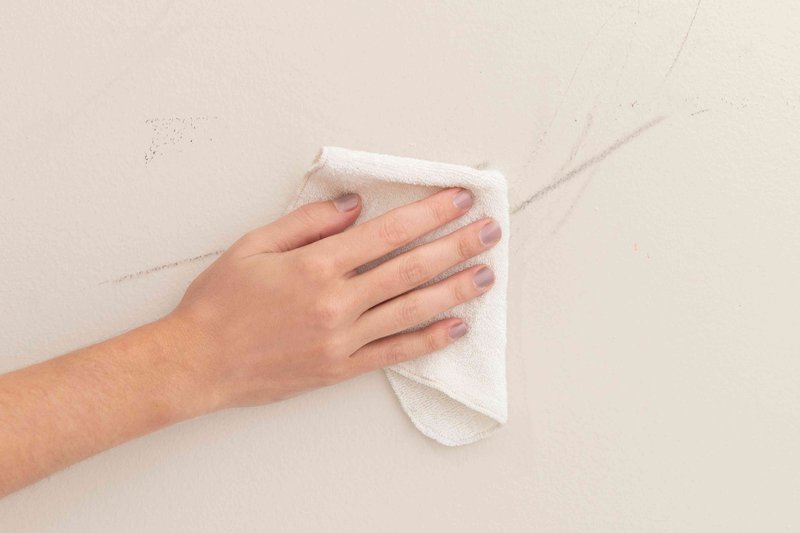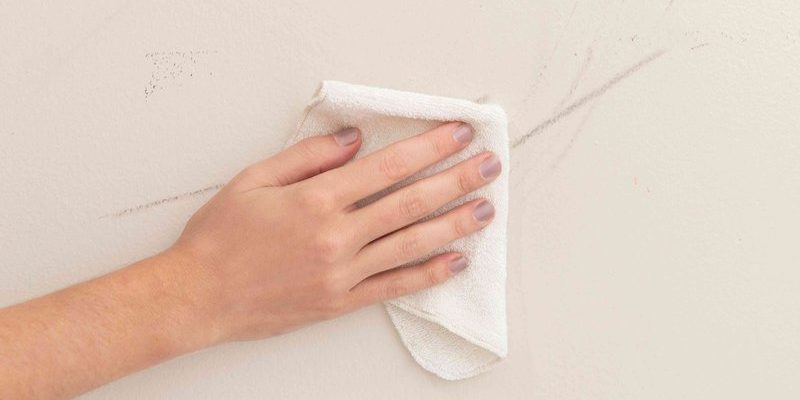
The real trouble starts when quick clean-ups only make things worse. You rub a little harder, the scuff mark stays put, and sometimes the plate looks even duller than before. Whether you’ve got a gleaming brass Baldwin, a modern stainless steel Schlage, or a sturdy aluminum no-name, stubborn scuff marks on a kick plate are a universal headache. Let’s break down why they’re so tough—and how everyday folks (not just pro cleaners) can finally win the battle against those frustrating streaks.
Why Do Scuff Marks Stick To Kick Plates?
Here’s the thing: kick plates are designed to take abuse. They’re there so your doors don’t end up splintered, dented, or looking like someone’s been playing soccer indoors. But that means their surfaces—whether shiny, brushed, or coated—aren’t just exposed to dirt. They’re exposed to *constant friction*.
Most scuff marks come from shoes, bags, strollers, or even vacuum cleaners. The mark itself is usually not a stain that soaks in, but a layer of rubber, plastic, or grit literally rubbed *onto* your kick plate’s finish. That’s why scuffs often feel almost “on top” of the metal, but stubborn as glue.
What’s especially sneaky is that different materials leave different types of marks. A black rubber sole might leave a greasy streak, while hard plastic from a suitcase wheel can scratch or even melt a faint line. On shiny brass or bronze (think Baldwin kick plates), these stand out like a sore thumb. Stainless steel, like you’ll see on many Schlage plates, hides scuffs better, but collects fingerprints and fine scratches that show up in the right light.
So, cleaning isn’t just about *removing* the mark—it’s about not making things worse. Use the wrong method, and you could dull the finish, create haze, or leave the surface looking patchier than before.
What Supplies Work Best For Cleaning Kick Plate Scuffs?
Honestly, you don’t need a professional cleaning kit or expensive chemicals for this job. The secret weapon is the right combination of gentleness and abrasion. Too soft, and nothing happens. Too harsh, and you’ll wreck the finish.
Here’s a quick run-down of what works:
- Microfiber cloths: Always your first line of defense. They lift grime without scratching, especially on delicate plates.
- Mild dish soap and water: A drop or two in warm water is surprisingly effective on most fresh marks. The key is to mix, dip, wring out—never soak the surface.
- Magic erasers (melamine sponges): These can work wonders on stubborn rubber or sneaker marks. They’re abrasive, so use gently, especially on shiny finishes.
- Baking soda paste: For heavy-duty scuffs, mix baking soda with water to form a paste. It adds gentle grit without the risk of sandpaper-level damage.
- Soft toothbrush: Great for working into grooves or textured plates. Avoid hard-bristled brushes—they’ll scratch polished surfaces.
You might be tempted to grab harsh chemicals or steel wool, but slow down. Anything too strong—like bleach, ammonia, or those oddly satisfying “miracle” cleaners—can actually pit, tarnish, or strip plated finishes.
Pro tip: Always start with the gentlest method and move up only if needed. It’s easier to clean again than to fix accidental damage.
Step-By-Step: How To Remove Scuff Marks From A Kick Plate
Let me explain the process, step by step, so you don’t miss anything. If you’ve never cleaned a kick plate before, go slow. The goal is to remove the marks *without* turning a small problem into a big one.
- Step 1: Wipe Away Dust and Loose Dirt
Use a dry microfiber cloth to gently wipe the kick plate. This removes surface grit—if you skip this, you risk rubbing dirt *into* the metal as you clean. - Step 2: Treat With Soapy Water
Dip a clean microfiber cloth into a mixture of warm water and a drop of mild dish soap. Wring it out so it’s damp, not dripping. Wipe the scuffed area in gentle, circular motions. - Step 3: Attack Stubborn Scuffs With a Magic Eraser
If marks remain, dampen a corner of a melamine “magic eraser.” Gently rub the scuff, using light pressure. Magic erasers can dull shiny finishes, so check your progress and stop if you see hazing. - Step 4: Make a Baking Soda Paste
If the scuff is still holding on, mix a little baking soda and water to form a thick paste. Apply it to the mark, then buff lightly with a soft, non-abrasive cloth or a soft toothbrush. Wipe clean with damp cloth afterward. - Step 5: Dry and Buff
Once the mark is gone, dry the area with a fresh towel. If your kick plate is metal, buff gently in the direction of the grain (for brushed finishes) for best results.
Here’s what you should not do: Don’t use anything sharp, don’t scrub so hard you remove the finish, and don’t use colored cleaning pads (the dye may transfer).
What If The Scuff Mark Just Won’t Budge?
You might be wondering, “What if I’ve tried everything, and that one scuff still won’t move?” This happens more often than you’d think—some marks are just especially stubborn, usually from melted plastic or deep rubber.
First, don’t panic or reach for aggressive solutions like steel wool or harsh cleaners. These will almost always leave swirl marks, scratches, or discoloration—especially on brass or bronze plates like Baldwin makes. If it’s a stainless kick plate, like Schlage, it might tolerate a bit more effort, but you still want to avoid damaging the finish.
At this point, try focused spot-cleaning:
- Use a pencil eraser: Some light scuffs respond to the friction from a classic pink eraser.
- Rubbing alcohol on a cotton swab: For sticky, greasy, or permanent marker-type stains, dab a tiny bit on the mark. Avoid flooding the surface.
- Commercial metal polish: Only as a last resort, and only if you know your kick plate’s finish can handle it. Test in a hidden spot first.
If the mark is actually a scratch—where the finish itself is gouged or worn away—cleaning won’t help. You’re looking at touch-up paint, polish, or possibly replacing the plate. For most homes, that’s a rare worst-case scenario.
Insight: Sometimes leaving a faint “ghost” of a stubborn scuff is better than risking a patchy, over-polished spot.
Does The Type Of Kick Plate Change How You Should Clean It?
Absolutely. Here’s where knowing the *remote* isn’t enough—you’ve got to match your cleaning approach to the *brand and material* of the kick plate, too.
- Brass Kick Plates (e.g., Baldwin):
These are usually lacquered to stay shiny. Avoid anything acidic (like vinegar or lemon) which can break down the lacquer. Stick to mild soap and water, and never use abrasives unless you’re planning to re-polish the whole thing. - Stainless Steel (e.g., Schlage):
These are tougher but love to collect fingerprints and streaks. Clean with the grain, and use stainless-specific polish if you want that extra gleam after cleaning. Avoid bleach, which can pit stainless steel. - Anodized Aluminum:
Very common on commercial doors. These resist corrosion but can scratch easily. No harsh scrubbing; stick with microfiber and gentle cleaners. - Plastic-Coated or Painted Kick Plates:
Sometimes cheaper plates are actually painted or plastic. Abrasives will cloud or chip them, so only use gentle soap and soft cloths.
Not sure what you’ve got? Look for manufacturer markings or check your home’s product documentation. If all else fails, test your cleaning method on a tiny, hidden corner first.
Tips For Keeping Kick Plates Clean Longer
Let’s face it: once you’ve scrubbed out every last scuff mark, you want to keep it looking fresh as long as possible. Here’s how to make your hard work last:
- Wipe regularly: A quick swipe with a microfiber every couple of days prevents buildup. It only takes five seconds when you’re already walking by.
- Shoe-free entryways: If you can swing it, leave shoes at the door to cut down on scuffing. It makes a difference, especially with kids or heavy boots.
- Install a door mat: Mats outside and inside collect grit that would otherwise rub into your kick plate. Choose one that’s long enough to catch a step or two.
- Protect during moves: If you’re moving furniture, suitcases, or equipment in or out, tape a towel over the kick plate. It might look silly for a few hours, but it saves you from brand-new scratches.
Here’s a personal trick: I keep a stash of pre-moistened cleaning wipes nearby. Whenever I spot a new scuff, I deal with it right away—no time for it to “set.” It’s a little habit that makes a big difference over months and years.
When To Replace Or Touch Up A Kick Plate
Sometimes, no matter how hard you scrub or polish, the kick plate just doesn’t bounce back. If the metal is deeply scratched, corroded, or the finish is peeling—especially on older Baldwin brass or well-used commercial plates—it might be time to consider replacement.
The good news? Replacement isn’t usually expensive or complicated. Most plates are held on with screws, and universal options can work even if you’ve lost the “official” brand plate. Just be sure to match the *size* and *hole pattern*—measuring twice saves you from a crooked fit.
If you’d rather not replace the whole thing, a little DIY touch-up can work in a pinch. Metal polishes, brass restorer, or even a single-coat paint touch-up pen can breathe new life into tired plates. Be realistic about the finish, though—sometimes a patch only draws more attention.
Final thought: Modern kick plates, whether Baldwin, Schlage, or a no-name generic, are meant to take a beating. A few scuffs just mean you’ve got a busy home.
Closing Thoughts
Scuff marks on a kick plate are one of those little home annoyances that never ask for attention—until they’re all you can see. The good news is, with the right mix of patience and gentle cleaning tools, you can erase most stubborn marks without damaging your door’s finish. Whether you’re maintaining a gleaming Baldwin, keeping a Schlage stainless steel plate spotless, or wrestling with a budget option, the process is about balancing toughness with care.
Keep up with regular wipe-downs, stay gentle, and don’t let a stubborn spot tempt you into over-scrubbing. At the end of the day, a kick plate full of scuffs is a sign of a well-loved space. Clean it up when it bothers you—and know you’re in good company if you miss a spot or two.
